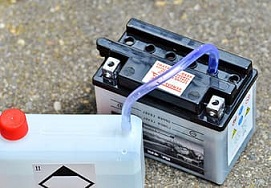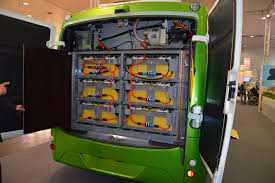Much excitement in the universe of battery technology. Battery storage is rapidly growing world-wide, important for the energy transition. Batteries are improving and their costs are falling, all the time. And the million-mile battery might be coming soon. Meaning that the battery would far outlive the car and could have a second and third life.

Yes, battery technology is important for the energy transition. Batteries can manage the intermittent energy provided by renewable solar or wind power. For instance batteries in electric cars, connected to the grid. They can be charged when energy supply is abundant and can reversely power the grid on cloudy and calm days or even weeks. But batteries are still a long way from being able to perform that task. Pumped hydroelectric storage makes up 96.2% of worldwide energy storage capacity, says Chemical and Enigineering News in a recent review of battery technology, and batteries are just a distant second. And even though the sale of electric cars is sharply rising, in 2019 just 2% of global car sales were electric. Nevertheless, in many countries almost all storage capacity added to the grid since the turn of the century has been from batteries.
Better battery technology for longer living batteries
This month, Grist, an interesting source of news on anything sustainable, ran an article on the ‘million-mile’ battery. In the past few years, the battery’s longevity has been a cause of concern for buyers of electric cars. Would the battery live as long as the car (generally some 200,000 miles)? Or would it have to be replaced before other parts of the car ran out? We have just about 10 years of data on modern electric cars. But now these seem to indicate that battery technology is up to par. Both Nissan and Tesla report that batteries hold out for well over 200,000 miles. Replacement is only required for cars that drive much more, like taxis. And companies in the field of battery technology, like General Motors and the Chinese producer CATL indicate that they are almost at the point of the million mile battery. Tesla is expected to follow soon.

This could have many positive effects. For instance, the price of second-hand electric cars may go up, as the buyers needn’t worry about the battery any more. Batteries might live a second life as stationary electricity storage, thereby increasing the electricity grid’s backup. Batteries might even live so long that we could run out of scarce materials, primarily cobalt. But then, this would be a good incentive for getting good battery recycling on the road, now still a largely neglected piece of the supply chain. Or quickly develop a battery technology that would use less cobalt. And new battery concepts are actively researched. Like a sodium ion battery that could do away with possible tensions on the lithium market. Or lithium ion batteries with silicon instead of graphite anodes Better and longer living batteries seem to be around the corner.
And why not store heat instead of electricity?
Still, the majority of global energy use is in the form of heat. Predominantly in the form of low-level heat, mainly for heating homes and buildings. Couldn’t we store energy in the form of low-level heat, instead of in electric batteries? In ‘heat batteries’, so to speak? Heating homes electrically, mainly through the intermediate of heat pumps, could place a heavy burden on the electric grid. Why not store any surplus of energy in the form in which much of it will eventually be used, i.e. heat? For this purpose, Dutch inventor Cees van Nimwegen developed a heat battery technology, the ‘heat battery’ made of basalt. Basalt is a common rock with a large heat storage capacity. His CESAR system can store heat up to 500oC. The rock is encapsulated in mineral wool 1 m thick; the bulky system can store the energy for months, even years. A pilot project with 36 houses is currently under construction in the Netherlands. ‘For the time being, our system is bound to be used,’ the system’s creator said confidently.
In discussions on technological futures, we often witness sliding panels, so to speak. If shortage of some essential material seems to come around the horizon, research unveils new materials for the same function. Cobalt is on the critical pathway now. Both because of possible shortages of supply and because of the dire conditions in which cobalt is mined, predominantly in Congo. Buy already, research is underway to develop batteries low in cobalt. No doubt, this process cannot go on forever. But for the time being, the mechanism works. Because of that, battery technology is still improving, all the time.
Interesting? Then also read:
Energy storage, its role in the transition
Smart grids: the power of the small scale
Elon Musk and a lot of batteries
